Walkabout (film)
8.9 /10 2 Votes
Initial DVD release April 21, 1998 Duration Language EnglishYol?u Matha | 7.8/10 IMDb Genre Adventure, Drama Budget 1 million AUD Country AustraliaUnited Kingdom | |||||||||||||||||||||||||||||||||
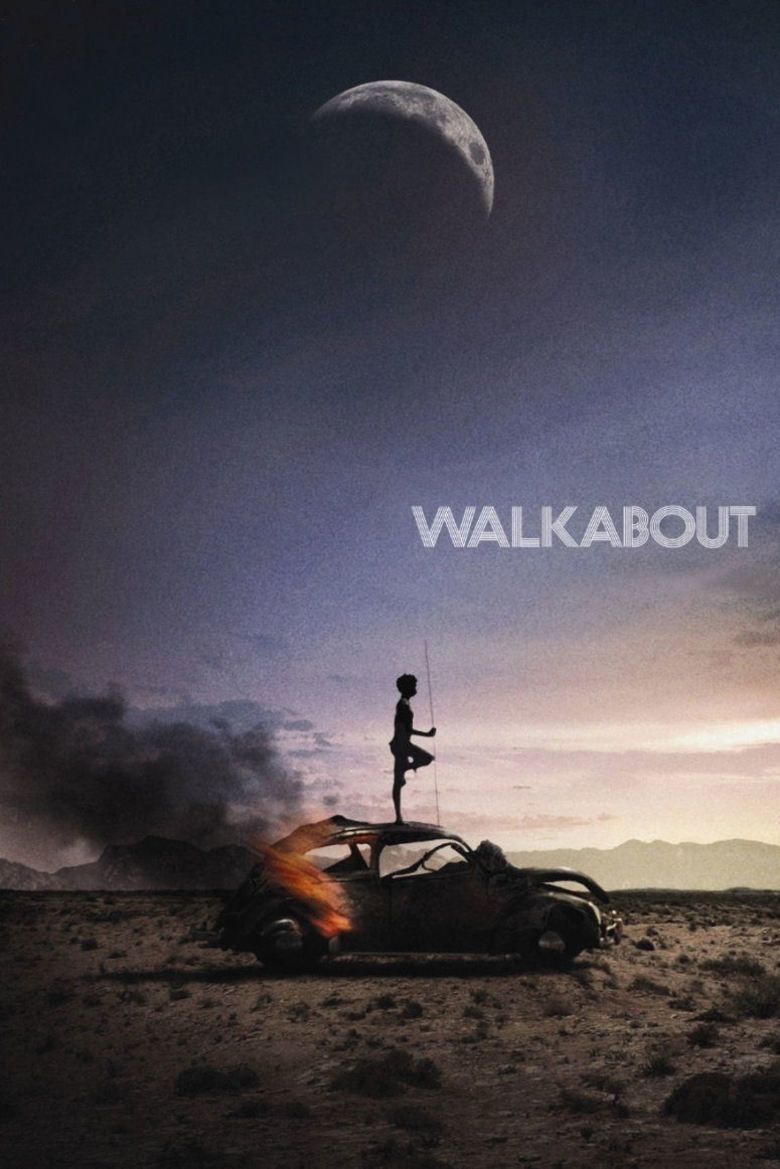 | ||||||||||||||||||||||||||||||||||
Based on novel by James Vance Marshall Cast (Girl), Luc Roeg (White Boy), (Black Boy), (Man), (Man), Peter Carver (No Hoper)Similar movies Youth , Sexual Chronicles of a French Family , Blackhat , The Hot Nights of Linda , Turkey Shoot , Django Unchained Tagline A boy and girl face the challenge of the world's last frontier | ||||||||||||||||||||||||||||||||||
Walkabout is a 1971 survival film set in the Australian outback, directed by Nicolas Roeg and starring Jenny Agutter, Luc Roeg (credited as "Lucien John") and David Gulpilil (credited as "David Gumpilil"). Edward Bond wrote the screenplay, which is loosely based on the 1959 novel Walkabout by James Vance Marshall. Walkabout premiered in competition at the 1971 Cannes Film Festival.
Contents
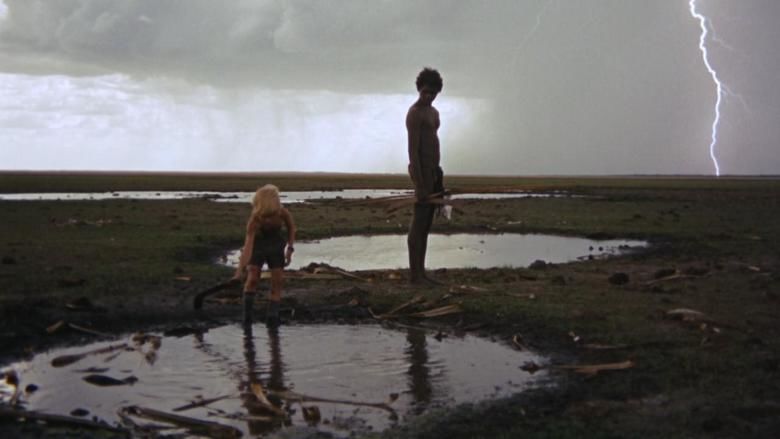
Plot
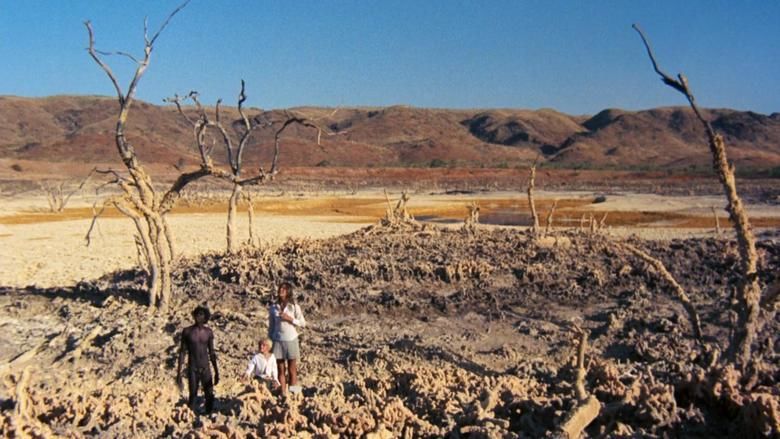
In November, a white, city-bred teenage schoolgirl (Jenny Agutter) and her much younger brother (Luc Roeg) become stranded in the wilderness after their father (John Meillon) goes berserk. After driving them far into the Australian outback for a picnic, the father suddenly begins shooting at the children. They run behind rocks for cover, whereupon he sets the car on fire and shoots himself in the head. The girl conceals what has happened from her brother and, after grabbing some food and supplies, the pair head out into the desert.

By the middle of the next day, they are weak and the boy can barely walk. Discovering a small water hole with a fruiting tree, they spend the day playing, bathing, and resting. By the next morning, the water has dried up. They are then discovered by an Aboriginal boy (David Gulpilil). Although the girl cannot communicate with him, due to the language barrier, her brother mimes their need for water and the newcomer cheerfully shows them how to draw it from the drying bed of the oasis. The three travel together, with the Aboriginal boy sharing food he has caught hunting. The boys learn to communicate slightly using words and sign language.

While in the vicinity of a plantation, a white woman walks past the Aboriginal, who simply ignores her when she speaks to him. She appears to see the other children, but they do not see her, and they continue on their journey. The children also discover a weather balloon belonging to a nearby research team working in the desert.
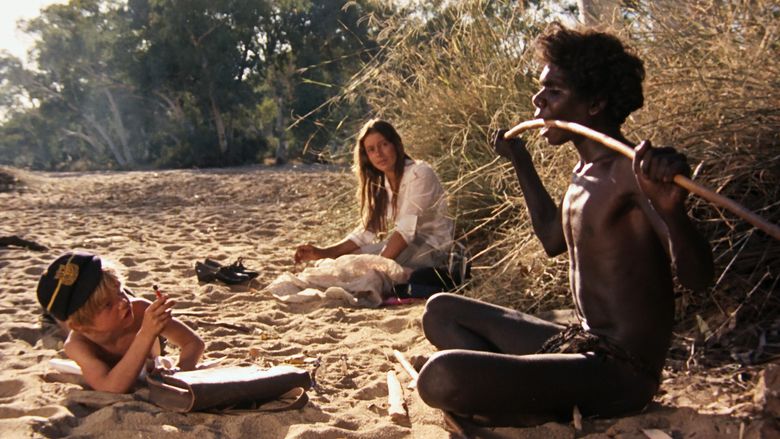
After drawing markings of a modern-style house, the Aboriginal boy eventually leads them to an abandoned farm, showing the other boy a paved road nearby. The Aboriginal boy hunts down a water buffalo and is wrestling it to the ground when two white hunters appear in a truck and nearly run him over. He watches as they shoot several buffalo with a rifle, shocking him. The boy then returns to the farm, but passes by without speaking.

Later, catching the undressing girl by surprise, he initiates a mating ritual by painting markings on himself and performing a courtship dance in front of her. Although he dances outside all day and into the night until he becomes exhausted, she ignores him and tells her brother they will leave him the next day. In the morning, after they dress in their school uniforms, the brother takes her to the Aboriginal boy's body, hanging in a tree. Before leaving, the girl wipes ants from the dead boy's chest. Hiking up the road, the siblings find a nearly deserted mining town where a surly white man directs them towards a nearby hotel.
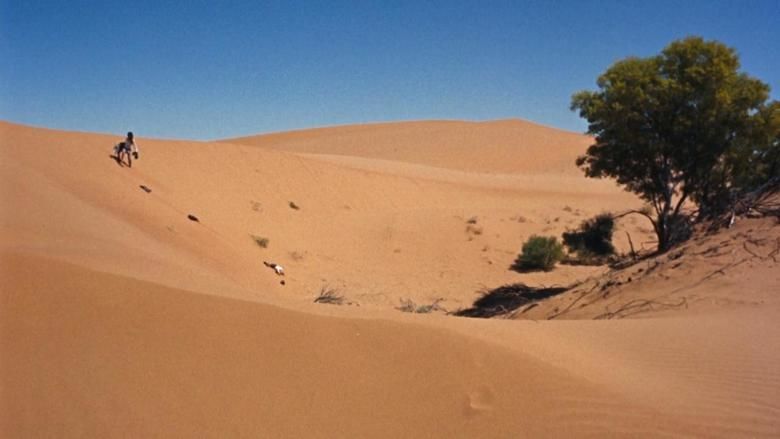
Much later, a businessman arrives home as the now grown-up girl prepares dinner; while he embraces her and relates office gossip, she imagines a scene in which she, her brother, and the Aboriginal boy are playing and swimming naked in a deep pool in the outback.
Production details
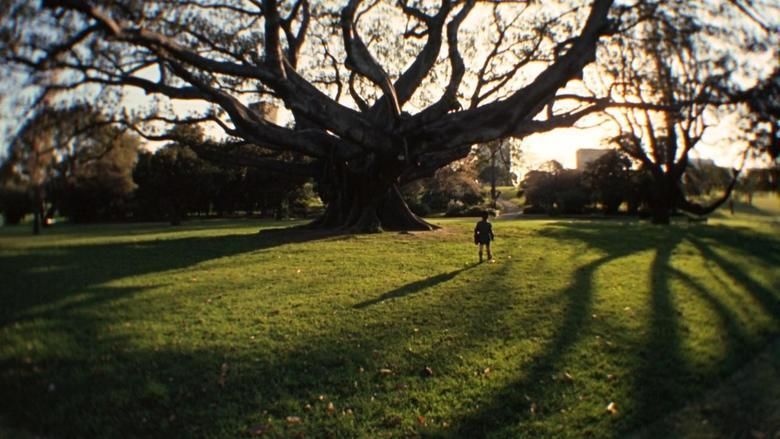
The movie was the second feature directed by Nicolas Roeg. He had long planned to make a film of the novel Walkabout, in which the children are Americans stranded by a plane crash. After the indigenous boy finds and leads them to safety, he dies of influenza contracted from them, as he has not been immunised. Roeg had not been able to find a script he was happy with, until the English playwright Edward Bond did a minimal 14-page screenplay.
Roeg obtained backing from two American businessmen, Max Raab and Si Litvinoff, who incorporated a company in Australia but raised the budget entirely in the US and sold world rights to 20th Century Fox. Filming began in Sydney in August 1969 and later moved to Alice Springs.
Roeg, a British filmmaker, brought an outsider's eye and interpretation to the Australian setting, and improvised greatly during filming. He has commented, "We didn’t really plan anything—we just came across things by chance…filming whatever we found." The director's son, Luc Roeg, played the younger boy in the film.
In the USA, the film was originally rated R by the MPAA due to nudity, but was reduced to a GP-rating (PG) on appeal.
Actor David Gulpilil is miscredited in the film as David Gumpilil.
The music was composed and conducted by John Barry, and produced by Phil Ramone.
The poem read at the end of the film is Poem 40 from A.E. Housman's A Shropshire Lad.
Reception and interpretation
Walkabout fared poorly at the box office in Australia. Critics debated whether it could be considered an Australian film, and whether it was an embrace of or a reaction to the country's cultural and natural context.
The film is an example of Roeg's well-defined directorial style, characterised by strong visual composition from his experience as a cinematographer, combined with extensive cross-cutting and the juxtaposition of events, location, or environments to build his themes.
The film is noted for its cinematography and is interspersed with numerous images of Australian plant and animal life, along with its varied landscapes. The director often uses those images to emphasise events in the plot and set the emotional tone, most notably during the violent scene involving the rifle hunters.Though many of the events are improbable in a natural setting—in one scene a wombat wanders past the sleeping children in the middle of a desert—they create a backdrop of a populous, varied environment. In Walkabout, an analysis of the film, author Louis Nowra wrote:
"...I was stunned. The images of the Outback were of an almost hallucinogenic intensity. Instead of the desert and bush being infused with a dull monotony, everything seemed acute, shrill, and incandescent. The Outback was beautiful and haunting."
Film critic Edward Guthmann also notes the strong use of exotic natural images, calling them a "chorus of lizards".
Critic Roger Ebert called it "one of the great films." He writes that it contains little moral or emotional judgment of its characters, and ultimately is a portrait of isolation in proximity:
"Is it a parable about noble savages and the crushed spirits of city dwellers? That's what the film's surface suggests, but I think it's about something deeper and more elusive: the mystery of communication."
Commenting on the film's enduring appeal, in 1998 Roeg described the film as:
"…a simple story about life and being alive, not covered with sophistry but addressing the most basic human themes; birth, death, mutability."
At the online review aggregator Rotten Tomatoes, the film holds a score of 93% based on 27 critical submissions, with an average rating of 8.2 out of 10 (showing however, as of 31 January 2013, "no consensus", on the site's Tomatometer.)
Legality
Walkabout features several scenes of animal hunting and killing, most notably a kangaroo being speared and bludgeoned to death. The Cinematograph Films (Animals) Act 1937 makes it illegal in the United Kingdom to distribute or exhibit material where the production involved inflicting pain or terror on an animal. Since the animals did not appear to suffer or be in distress the film was deemed to not contravene the Act. The film also includes scenes of nudity featuring Jenny Agutter, who the British Board of Film Classification (BBFC) surmised was 17 years old at the time of filming. The scenes did not pose a problem when submitted to the BBFC in 1971 and later in 1998; since the Protection of Children Act 1978 permitted the distribution and possession of indecent images of people over the age of 16 the issue of potential indecency had not been considered on previous occasions. However, the Sexual Offences Act 2003 raised the age threshold to 18 which meant the BBFC was required to consider the scenes of nudity in the context of the new law when the film was re-submitted in 2011. The BBFC reviewed the scenes and deemed them not to be "indecent" and passed the film uncut. Had this not been the case, the film would have been refused classification and it would have effectively made it illegal to distribute copies of the film.
References
Walkabout (film) WikipediaWalkabout (film) IMDb Walkabout (film) themoviedb.org
